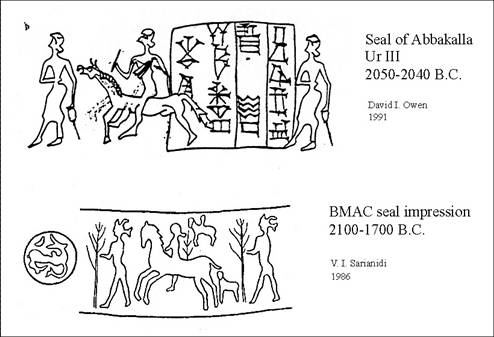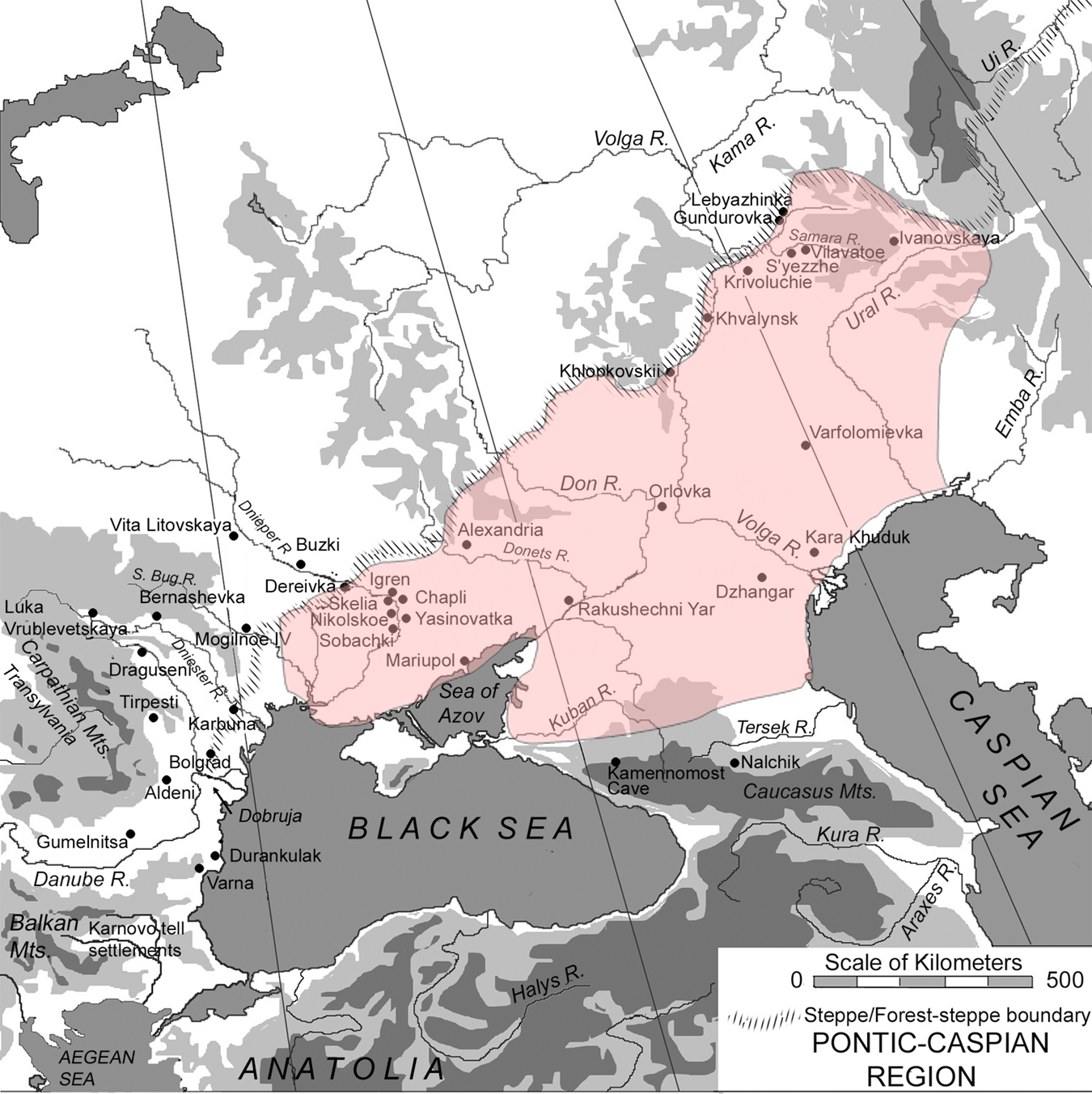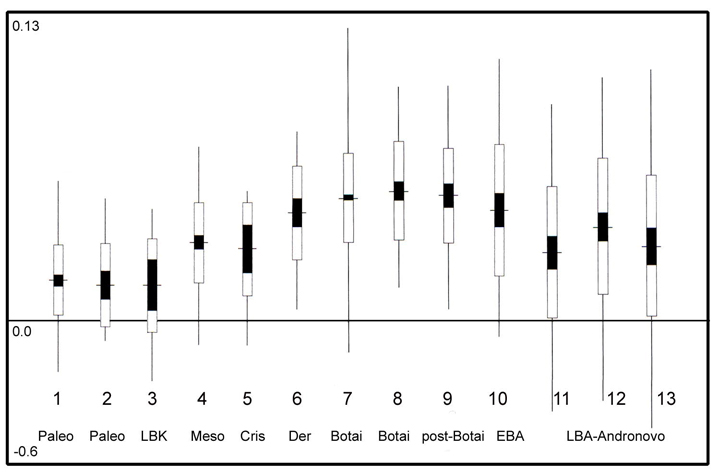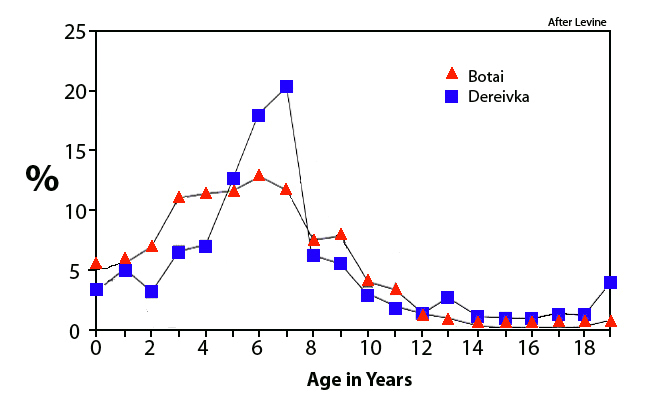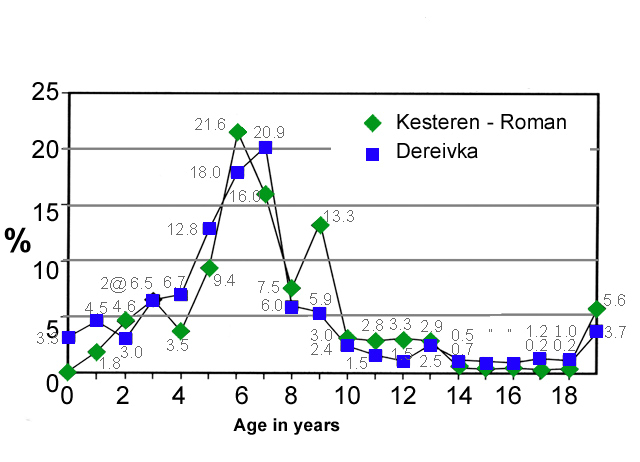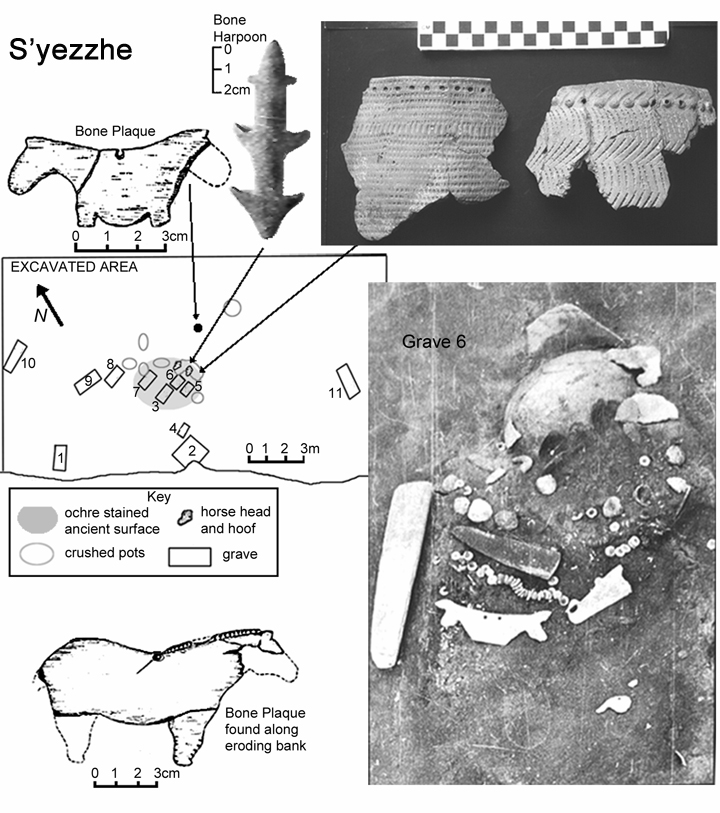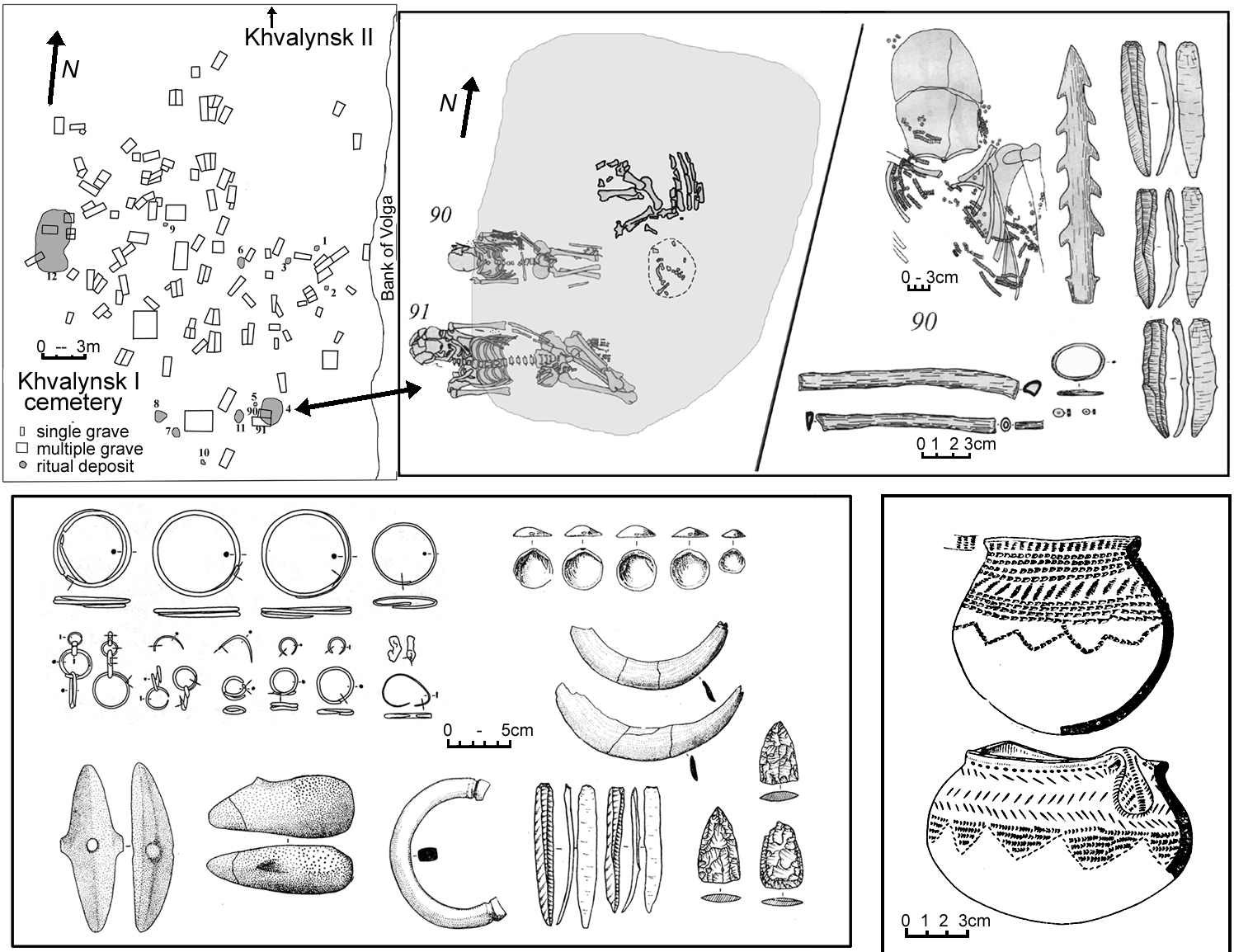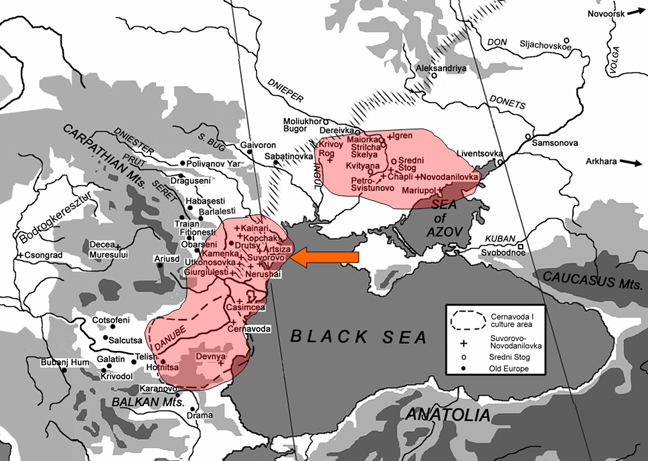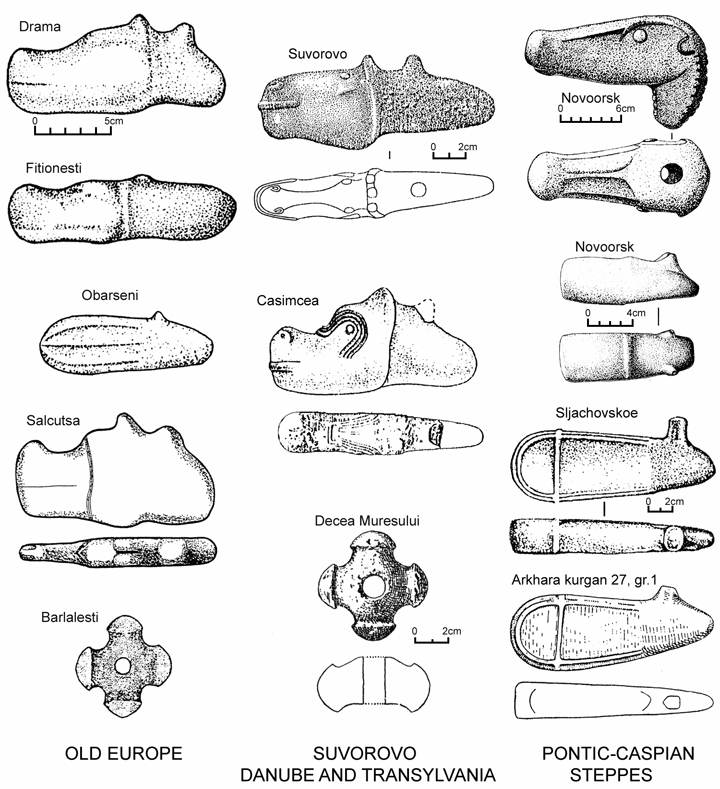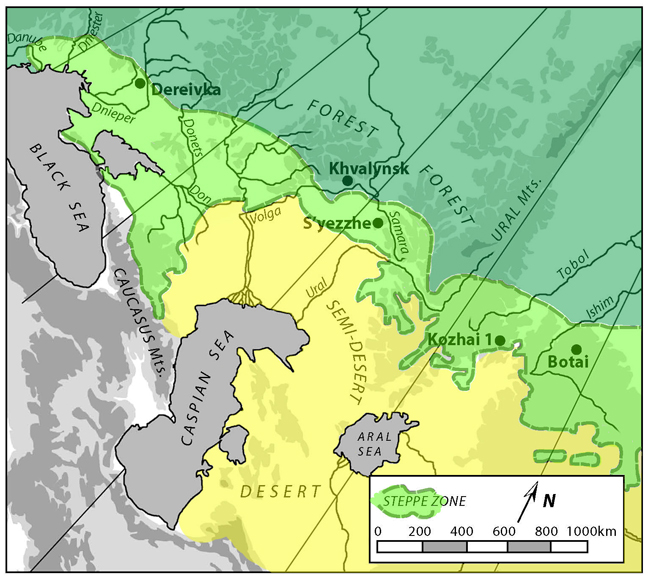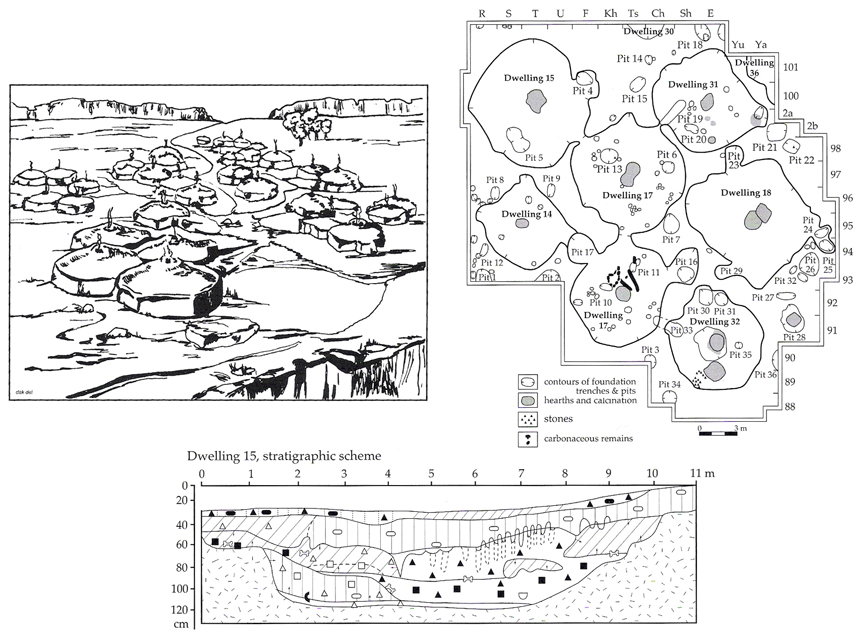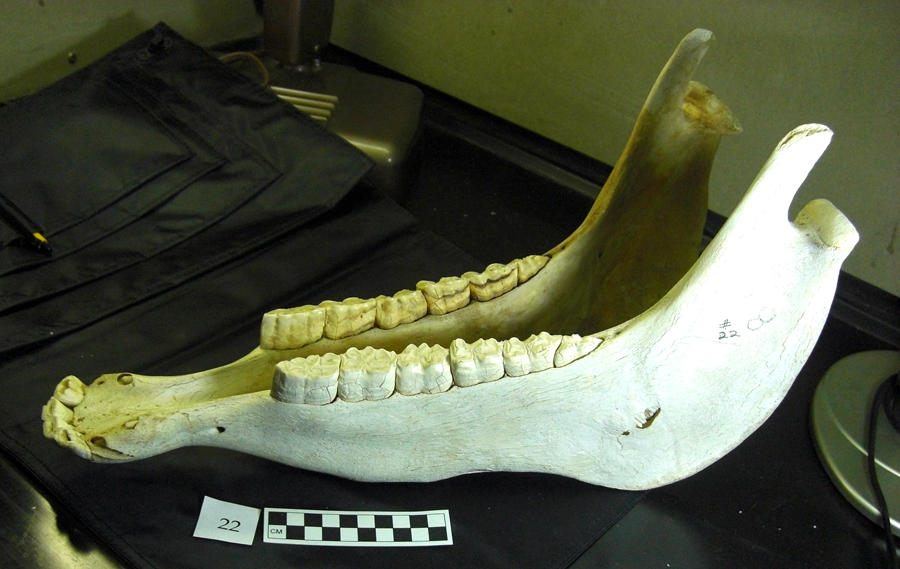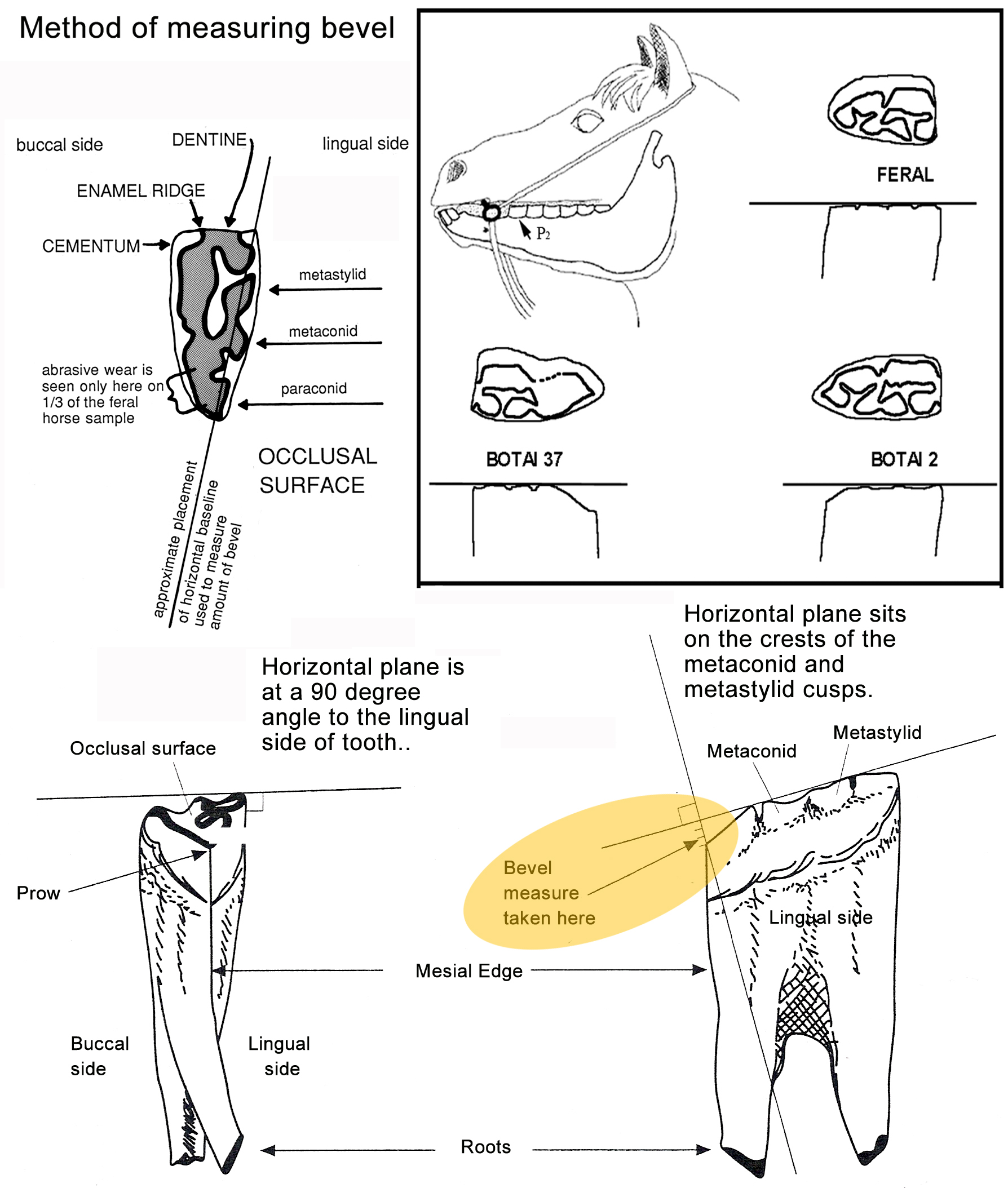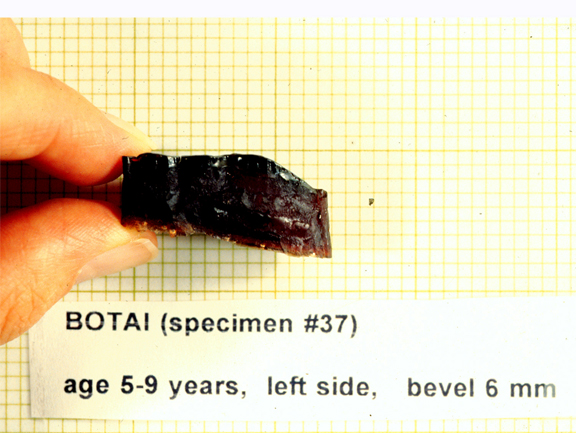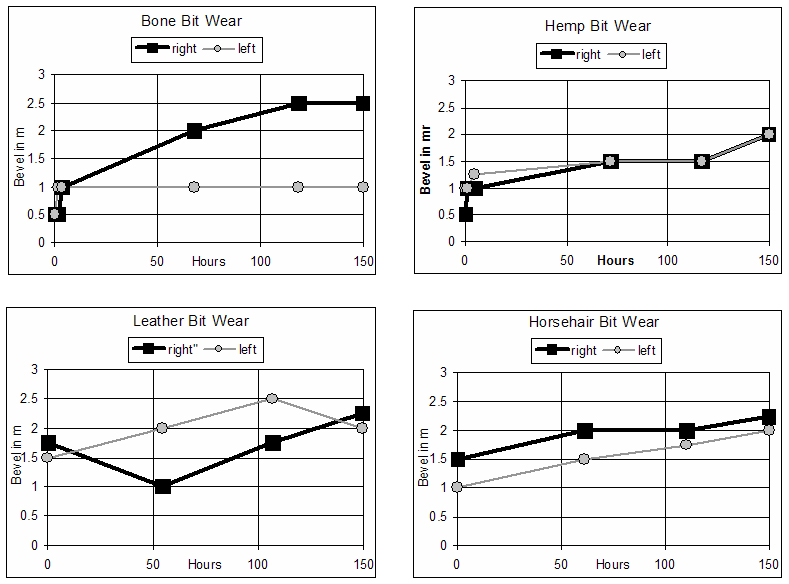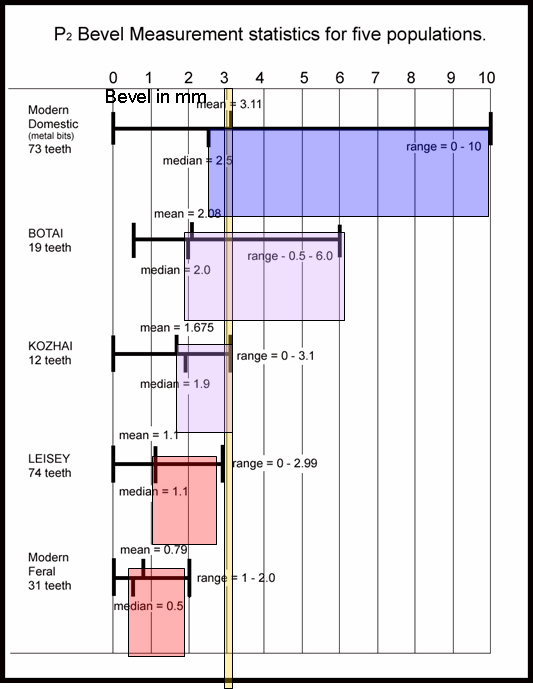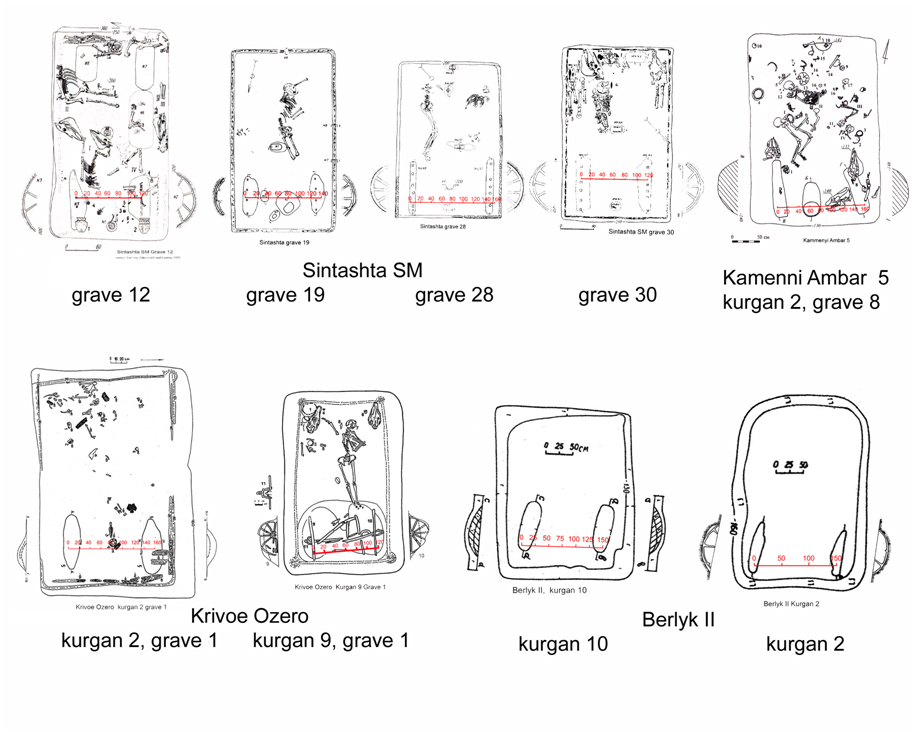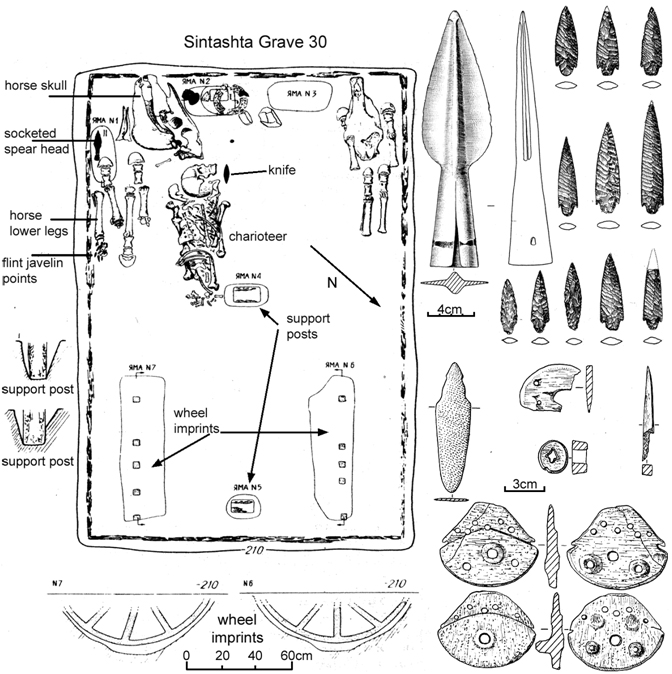|
|
|
Two of the oldest images of humans riding horses, dated about 2100-1700 BC, were discovered in the ruins of a Sumerian city (top) and in the cemetery of a fortified Central Asian oasis of the Bactria-Margiana Archaeological Complex (BMAC) (bottom). The seal scenes, one of which was the personal seal of the Animal Disburser for the Sumerian King Shu-Sin, seem to draw on a similar iconography, which might have spread with the first wave of horses to enter the ancient Near East, happening at the time the seals were carved. The Secondary Products Revolution, Horse-Riding, and
Mounted Warfare Introduction: the secondary products revolution and the horse Like V. Gordon Childe (1957), who had imposed a new coherence on European prehistory two generations earlier, Andrew Sherratt perceived a driving force that he thought might explain the wave of change that swept across Europe between about 3500-2500 BC (Sherratt 1983, 1997a). Childe had seen metallurgy as the prime mover. For Sherratt it was the Secondary Products Revolution (SPR). In the 1970s zoologists had realized that the earliest domesticated economic animalsЧsheep and goats, cattle, and pigsЧwere butchered young for two millennia or more after domestication, so were used almost solely for meat. Sherratt recognized that this conclusion carried an important implication: that secondary animal productsЧwool, dairy foods, traction power, and transportЧwere discovered later, and that this discovery should have had profound effects on human economies across the Old World. The SPR increased both the economic value and political importance of livestock. The ensuing expansion of animal herding literally cleared the European landscape of its unbroken forests while establishing the economic foundation for growing disparities in wealth and social rank. Thus the stage was set for his second revolution, in which emerging hierarchical Bronze Age political structures were reorganized around a set of imported elite drinking rituals (Sherratt 1985, 1987, 1991, 1997b, 1997c). According to Sherratt both the SPR and the drinking revolution (or Уdriving and drinkingФ, in a convenient shorthand he used in a 1985 lecture) emanated from the civilizations of the Near East but became distinctively European as they diffused across Europe (Sherratt 2003:236). Elements of the SPR were criticized almost immediately (Chapman 1983), but modified versions of his economic model, pared down to the diffusion of wagons, wool sheep, and beer/mead-feasting, quickly replaced migrations by Indo-European horse-riders as a leading explanation for the far-reaching changes that appeared with the Yamnaya, late Baden, Globular Amphorae, Corded Ware, and Bell Beaker cultures across Europe between 3500-2500 BC (Piggott 1983:61; Bökönyi 1987; Maran 2001; Cunliffe 2008:157-159, 169, 180). Sherratt described how the domestication of the horse was articulated with the SPR in three publications (1983, 1997a, 2003). Although his views changed, he consistently saw the principal significance of horses in military activities, associated first (about 2000 BC) with chariots and later (after 800 BC) with cavalry. He accepted a date in the fourth millennium BC for the earliest domestication of the horse, but like many he felt that horses were not used in war that early (Sherratt 2003:242). The earliest widespread evidence for the use of horses in warfare coincided with the invention of the metal bit and the chariot about 2000 BC (Littauer and Crouwel 2001), leading Sherratt to speculate that fourth-millennium horses might have been too small to ride comfortably, or that bits made of rope or leather might have been inadequate to control them in battle (Sherratt1997a: 217). Doubts about the size of steppe wild horses and the adequacy of organic bits were repeated by an influential group of archaeologists (Renfrew 2002:5-6; Kuzmina 2003:213; Drews 2004:20). They interpreted the spread of domesticated horses across Europe in the late fourth millennium BC as a trade in prestige symbols used as pack animals, and perhaps ridden with some difficulty, but whose potential as mounts in war remained unrealized (Sherratt 2003:242). Sherratt connected the domestication of the horse with the domestication of the camel and the ass, all of which, he suggested, were responses to the need for heavy-burden transport during the long-distance trade boom caused by the Uruk expansion, 3800-3100 BC (Rothman 2001). He placed the domestication of the horse in the arid valley of the lower Kura River in what is now eastern Georgia and Azerbaijan, where local wild horses could have been domesticated to serve as pack animals for Uruk metal-traders who, in this scenario, brought pack-trains of domesticated asses to the copper mines of the Caucasus (Sherratt 2003:240). The Asian pack ass could have been the model for the domesticated pack-horse, a concept Sherratt borrowed from Uerpmann (1990). Donkey-riding could have inspired the earliest horse-riding, and that could explain why, in Near Eastern art, many early horse-riders are shown sitting on the rear of the horse, a seat suitable for a donkey but uncomfortable and ineffective on a horse (Drews 2004:40-55; Littauer and Crouwel 1979). This early (ineffective) style of horse riding could have been a product of the initial context of domestication on the northern frontier of the Uruk expansion. We question most of this scenario, including its emphasis on warfare, its interpretation of horse sizes and capacities, and its location for horse domestication. (also see The domestication of the Horse below). On the subject of horse sizes, the Eneolithic (5200-3300 BC) horses of the Eurasian steppes were big enough to ride into battle. More than 70% of the Late Eneolithic horses at Dereivka, Ukraine (4200-3700 BC) and Botai, Kazakhstan (3600-3100 BC) stood 136-144cm at the withers (shoulders), or about 13-14 hands high (Benecke and von den Driesch 2003; Bibikova 1970). The horses ridden into battle by Roman cavalrymen commonly measured 120-150cm at the withers (Hyland 1990:68), and those of the American Plains Indians stood about 130-140 cm, or Уa little under 14 handsФ (Ewers 1955:33). Eneolithic steppe horses were about the same size as Roman and American Indian cavalry horses. On the question of rope bits, the authors conducted a riding experiment in which two expert riders rode never-bitted horses with rope and leather bits (Brown and Anthony 1998; Anthony, Brown and George 2006). Our riders had Уno problemФ controlling their horses. The American Plains Indians, regarded in the 19th century as among the finest light cavalry in the world, used a Сwar bridleТ that was just a rope looped around the lower jaw (Ewers 1955:76). History and experiment both show that horses the same size as Eneolithic steppe horses can be ridden effectively at a gallop, even in warfare, with a rope bit. The notion that the seat used in early horseback riding was ineffective (Drews 2004:40-55; Sherratt 1997a:217) is derived from Near Eastern art. Horses were not native to the Near East and remained rare there until after about 1800 BC. The native Near Eastern equids were onagers (Equus hemionus), behaviorally resistant to domestication, distributed in the steppes of Iran, Syria and Iraq; and asses (Equus asinus), amenable to domestication, and distributed in the south, in Egypt and the southern Levant. Asses were domesticated as pack animals in Egypt perhaps around 4000 BC and were used for transport throughout the Near East by 3500 BC, long before horses appeared (Rossel et al. 2008). Asses have low withers (shoulders) and a high, broad rump. If a rider sits forward on an ass and the animal lowers its head the rider can easily fall forward. Donkey-riders wishing to retain their dignity therefore usually sit back on the rump and hang on to a belly band. Horses are built differently: they have high withers, so horse-riders sit forward, just behind the shoulders/withers, a seat that also permits the rider to grasp the mane. Bronze Age Near Eastern artistic images that show a rider on an animal that clearly is a horse, but sitting on the rump and grasping a belly band, probably indicate only that some Near Eastern artists before 1000 BCE were more familiar with donkey-riding than horse-riding. Other images correctly placed horse-riders in a forward seat, even among the earliest depictions of horse-riding, Akkadian and Ur III images dated 2300-1900 BC (Owen 1991; Oates 2003). Steppe horse-riders would not have used a seat suited only to the body of a donkey, an animal most of them had never seen. Near Eastern art is an odd lens through which to examine the domestication of an animal that did not live in the Near East. Questions about the domestication of the horse are answered best in the region where wild horses were most important in human economies prior to their domesticationЧwhere humans relied on wild horse hunting for the majority of their meat diet. That region was the western Eurasian steppes, from the Dnieper to the Ural Rivers. Many settlements here dated long before 3500 BC contain more than 40% horse bones (Anthony 2007:198). The earlier settlements are interpreted as the camps of pedestrian wild horse hunters, but the later sites, after about 4500 BC, probably contain the bones of domesticated horses. |
|
